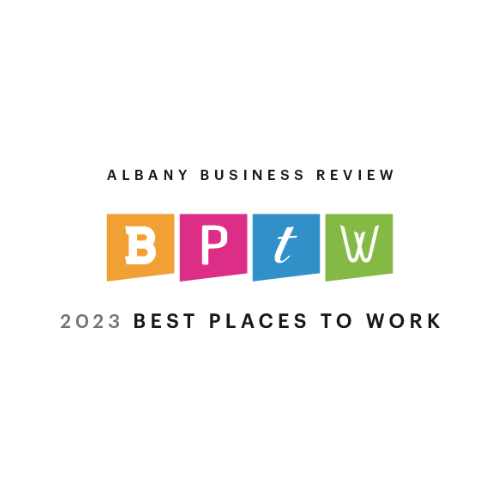BST has been following the Families First Coronavirus Response Act (FFCRA) closely. Below are several frequently asked questions that will help you determine your responsibility as an employer. The Department of Labor has also published some guidance on the FFCRA, including two fact sheets and a FAQ: Fact Sheet for Employees, a Fact Sheet for Employers and a Questions and Answers document.
- What is the effective date of the Families First Coronavirus Response Act (FFCRA), which includes the Emergency Paid Sick Leave Act and the Emergency Family and Medical Leave Expansion Act?
The FFCRA’s paid leave provisions are effective on April 1, 2020, and apply to leave taken between April 1, 2020, and December 31, 2020.
- As an employer, how do I know if my business is under the 500-employee threshold and therefore must provide paid sick leave or expanded family and medical leave?
You have fewer than 500 employees if, at the time your employee’s leave is to be taken, you employ fewer than 500 full-time and part-time employees within the United States, which includes any state of the United States, the District of Columbia, or any territory or possession of the United States. In making this determination, you should include employees on leave; temporary employees who are jointly employed by you and another employer (regardless of whether the jointly-employed employees are maintained on only your or another employer’s payroll); and day laborers supplied by a temporary agency (regardless of whether you are the temporary agency or the client firm if there is a continuing employment relationship). Workers who are independent contractors under the Fair Labor Standards Act (FLSA), rather than employees, are not considered employees for purposes of the 500-employee threshold.
Typically, a corporation (including its separate establishments or divisions) is considered to be a single employer and its employees must each be counted towards the 500-employee threshold. Where a corporation has an ownership interest in another corporation, the two corporations are separate employers unless they are joint employers under the FLSA with respect to certain employees. If two entities are found to be joint employers, all of their common employees must be counted in determining whether paid sick leave must be provided under the Emergency Paid Sick Leave Act and expanded family and medical leave must be provided under the Emergency Family and Medical Leave Expansion Act.
In general, two or more entities are separate employers unless they meet the integrated employer test under the Family and Medical Leave Act of 1993 (FMLA). If two entities are an integrated employer under the FMLA, then employees of all entities making up the integrated employer will be counted in determining employer coverage for purposes of expanded family and medical leave under the Emergency Family and Medical Leave Expansion Act.
- If providing child care-related paid sick leave and expanded family and medical leave at my business with fewer than 50 employees would jeopardize the viability of my business as a going concern, how do I take advantage of the small business exemption?
To elect this small business exemption, you should document why your business with fewer than 50 employees meets the criteria set forth by the department, which will be addressed in more detail in forthcoming regulations.
You should not send any materials to the Department of Labor when seeking a small business exemption for paid sick leave and expanded family and medical leave.
- How do I count hours worked by a part-time employee for purposes of paid sick leave or expanded family and medical leave?
A part-time employee is entitled to leave for his or her average number of work hours in a two-week period. Therefore, you calculate hours of leave based on the number of hours the employee is normally scheduled to work. If the normal hours scheduled are unknown, or if the part-time employee’s schedule varies, you may use a six-month average to calculate the average daily hours. Such a part-time employee may take paid sick leave for this number of hours per day for up to a two-week period, and may take expanded family and medical leave for the same number of hours per day up to ten weeks after that.
If this calculation cannot be made because the employee has not been employed for at least six months, use the number of hours that you and your employee agreed that the employee would work upon hiring. And if there is no such agreement, you may calculate the appropriate number of hours of leave based on the average hours per day the employee was scheduled to work over the entire term of his or her employment.
- What is the employee's regular rate of pay for purposes of the FFCRA?
For purposes of the FFCRA, the regular rate of pay used to calculate the employee's paid leave is the average of his/her regular rate over a period of up to six months prior to the date on which they take leave.[2] If you have not worked for your current employer for six months, the regular rate used to calculate your paid leave is the average of your regular rate of pay for each week you have worked for your current employer.
If you are paid with commissions, tips, or piece rates, these wages will be incorporated into the above calculation.
You can also compute this amount for each employee by adding all compensation that is part of the regular rate over the above period and divide that sum by all hours actually worked in the same period.
- May an employee take 80 hours of paid sick leave for their self-quarantine and then another amount of paid sick leave for another reason provided under the Emergency Paid Sick Leave Act?
No. They may take up to two weeks—or ten days—(80 hours for a full-time employee, or for a part-time employee, the number of hours equal to the average number of hours that the employee works over a typical two-week period) of paid sick leave for any combination of qualifying reasons. However, the total number of hours for which you receive paid sick leave is capped at 80 hours under the Emergency Paid Sick Leave Act.
- If I am home with my child because his or her school or place of care is closed, or child care provider is unavailable, do I get paid sick leave, expanded family and medical leave, or both—how do they interact?
You may be eligible for both types of leave, but only for a total of twelve weeks of paid leave. You may take both paid sick leave and expanded family and medical leave to care for your child whose school or place of care is closed, or child care provider is unavailable, due to COVID-19 related reasons. The Emergency Paid Sick Leave Act provides for an initial two weeks of paid leave. This period thus covers the first ten workdays of expanded family and medical leave, which are otherwise unpaid under the Emergency and Family Medical Leave Expansion Act unless you elect to use existing vacation, personal, or medical or sick leave under your employer’s policy. After the first ten workdays have elapsed, you will receive 2/3 of your regular rate of pay for the hours you would have been scheduled to work in the subsequent ten weeks under the Emergency and Family Medical Leave Expansion Act.
Please note that you can only receive the additional ten weeks of expanded family and medical leave under the Emergency Family and Medical Leave Expansion Act for leave to care for your child whose school or place of care is closed, or child care provider is unavailable, due to COVID-19 related reasons.
- Can my employer deny me paid sick leave if my employer gave me paid leave for a reason identified in the Emergency Paid Sick Leave Act prior to the Act going into effect?
No. The Emergency Paid Sick Leave Act imposes a new leave requirement on employers that is effective beginning on April 1, 2020.
- Are the paid sick leave and expanded family and medical leave requirements retroactive?
No.
- How do I know whether I have “been employed for at least 30 calendar days by the employer” for purposes of expanded family and medical leave?
You are considered to have been employed by your employer for at least 30 calendar days if your employer had you on its payroll for the 30 calendar days immediately prior to the day your leave would begin. For example, if you want to take leave on April 1, 2020, you would need to have been on your employer’s payroll as of March 2, 2020.
If you have been working for a company as a temporary employee, and the company subsequently hires you on a full-time basis, you may count any days you previously worked as a temporary employee toward this 30-day eligibility period.



